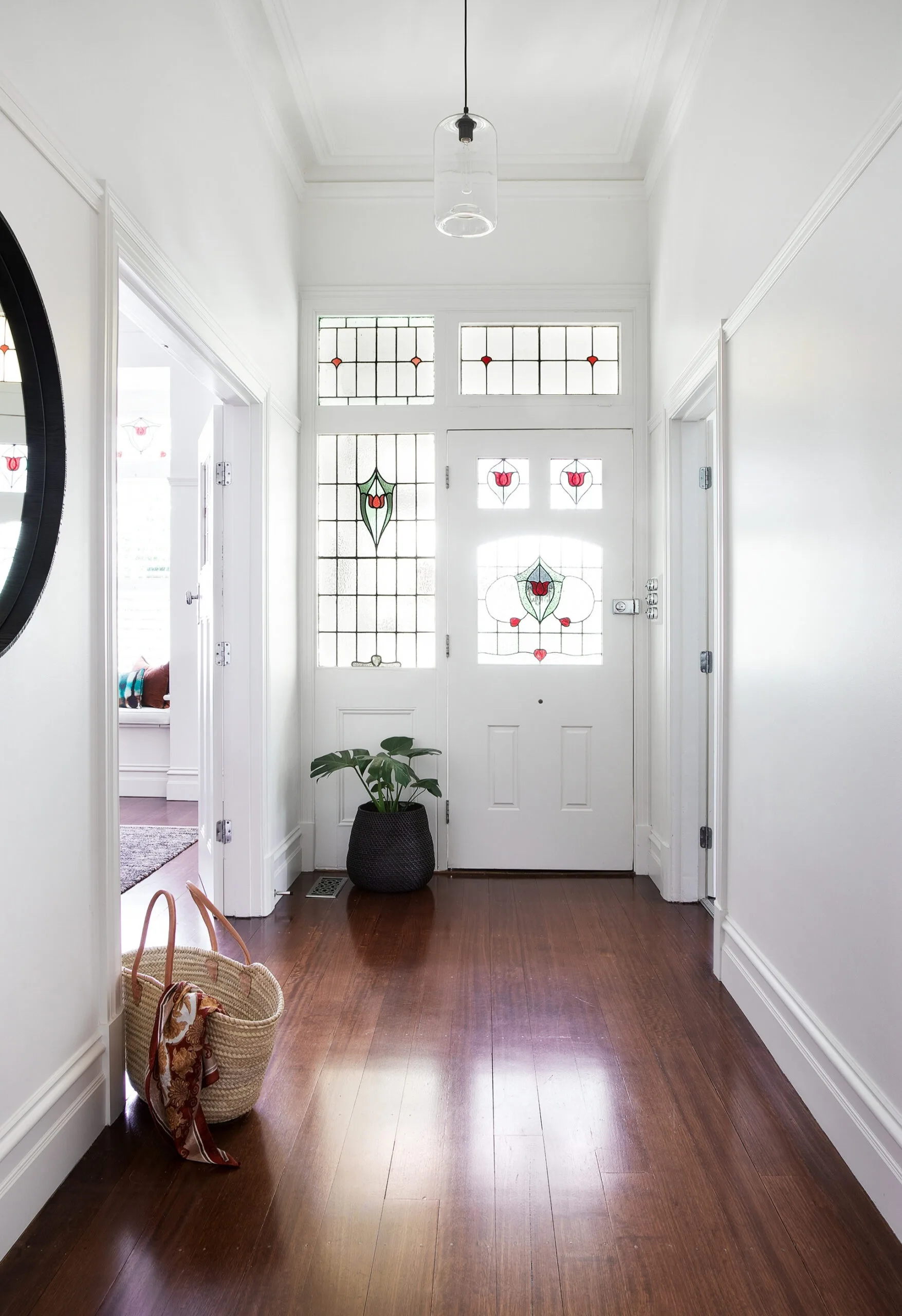Easy to clean, hygienic and adaptable to just about any interior scheme, timber flooring have been our go-to material underfoot for generations.
“Timber floors are versatile and offer natural warmth and beauty, making them a great choice for almost every room,” says Carpet Court ambassador and interior designer, Darren Palmer. With a limitless array of colours, grains and finishes to choose from, this hardworking surface makes a style statement all on its own.
Know your floors
Not all timber flooring is created equal. Solid planks are just that and come in raw, unfinished condition. Installation means possible acclimatising, fixing to a subfloor or joists, sanding and finishing. They are unbeatable for longevity.
“Plenty of solid timber floors more than 100 years old still serve the purpose they were put down for,” says managing director Bill Durkowyak of Sydney Flooring 1959.
On the other hand, engineered floorboards have a timber face on a multi-plywood base and come pre-finished, such as the engineered oak featured in this kitchen by Blakes London. They are quick to install, with no sanding, staining or sealing required. Some products are compatible with underfloor heating and the stability of the base also allows for wider board widths.

This modern farmhouse in the Southern Highlands is a magical marriage of sustainable architecture, timeworn materials, antiques, modern pieces and family heirlooms.
(Photographer: Nicki Dobrzynski | Styling: Kerrie-Ann Jones)The timber flooring grading system
The uniformity of colour and grain of wooden floors depends on the grade of timber. With minimal natural detail on show, Select Grade is the most expensive option – the French oak boards in this kitchen/dining area show how sharp it can look – while Feature Grade puts any knots and grains, even insect trails, on show. Standard Grade sits in between, with a moderate level of features to admire.
“Some people like the more contemporary, uniform look of Select,” says Bill Durkowyak of Sydney Flooring 1959. “Others like it natural – the warts and all that you get with Feature Grade.”
Recycled timber floorboards – a timeless favourite
Recycled timber boards are having a resurgence in popularity, while parquetry flooring in a herringbone pattern (such as this stained engineered oak, left) can adapt to all schemes. “Dark timber floors can look fantastic – if you have white cabinetry and walls, the contrast is a feature in itself,” says interior architect Sally Rhys-Jones. Brushbox hardwood is a case in point. “The Scandinavian trend is still coming through,” says Anne Plumb of Royal Oak Floors. “Greys, ash tones and whites are very popular.” Oregon pine is a perfect timber for this trend. “Some of the colours and finishes available with engineered boards would be hard to achieve with a solid timber floor,” said Anne Plumb.
Types of timber flooring
1. Blackbutt
This hardy timber has a straight-running grain with pale colouring, making it ideal to stain.

Blackbutt timber floorboards line the hallway overlooking the pool of this light-filled abode in coastal northern NSW.
(Photographer: Louise Roche | Styling: Kylie Jackes)2. Ironbark
A coarse texture and rich colours ranging from grey to red lend a refined, classical air.

3. Jarrah
A slow-growing hardwood, it’s known for its rich red hues and distinct grain features – just right for heritage or Federation styles.

4. Oak
From our own Tasmanian variety to American and French options, oak has creamy light-brown notes, growth rings and a delicate grain. It’s superb in a Scandinavian scheme, especially smoked limed oak. Oak has creamy light-brown notes, growth rings and a delicate grain. It’s superb in a Scandinavian scheme, especially smoked limed oak.

5. Spotted Gum
Visual variety is the key here, with colours ranging from sandy to chocolate brown, with pink and olive undertones to boot.

How to choose environmentally friendly timber flooring
Carbon trapping, recyclable, sustainable – timber stars in environmental sensitivity, but the source is important. To be sure your timber hasn’t been illegally harvested, “look for either FSC [Forest Stewardship Council] or PEFC [Programme for the Endorsement of Forest Certification] certified timbers,” says national marketing manager Michelle Kelly of Porta. Most Australian species are certified, with the benefit of supporting local jobs and a lower carbon footprint with transport.

The interior palette of white walls and dark timber herringbone floors is a harmonious backdrop for this heritage Sydney abode. (Photographer: Simon Whitbread | Styling: Ashley Pratt)
What makes a timber a “hardwood”?
‘Hardwood’ is not a timber’s ‘hardness’ but its biological make-up. Most hardwoods are denser and stronger than softwoods, but not always. If in doubt, look for the Janka rating, an impact test carried out on wood species to largely determine whether it is suitable for timber flooring. “The higher the number, the greater the hardness,” says Michelle. Species such as ironbark (14.0) and spotted gum (11.0) score highly – at the other end of the scale, cypress pine, American oak and European oak score 6.1, 6.0 and 6.0 respectively.
“Have the installer pre-stain some timber samples and see how each appears in different light all around the house,” says Sally-Rhys-Jones.

The owners of this graceful period home in Melbourne paired dark timber floorboards with beautiful period features dating back to 1906.
(Photographer: Shania Shegedyn | Styling: Alana Langan)



